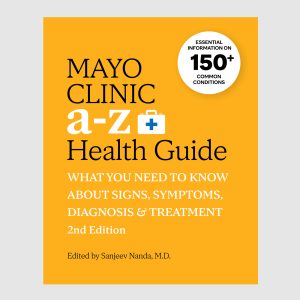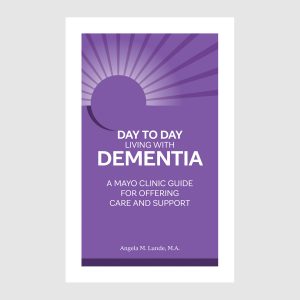
In 2015, a small study on the potential addictive qualities of some foods created a media frenzy.
Upon its release, one newspaper warned, “Cheese triggers the same part of the brain as hard drugs.”
In the years since, additional foods — bacon, ice cream, potato chips, to name a few — joined the “as addictive as hard drugs” lists published by a variety of outlets. More recently, the entire category of ultraprocessed foods was deemed by some as “addictive.”
However, while the media and the public often paint specific foods with the “addictive” label, the concept is controversial within the scientific community.
“Many people do struggle to control portion sizes of ultraprocessed foods, but the addictive label probably isn’t accurate, at least not for most people,” says Tara M. Schmidt, R DN, LD, lead dietitian with the Mayo Clinic Diet.
What is food addiction?
Healthcare professionals use the Diagnostic and Statistical Manual of Mental Disorders DSM-5-TR when assessing and diagnosing mental health issues such as substance use disorder. Developed by more than 200 of the world’s top researchers and clinicians, the manual’s fifth and most current edition does not include “food addiction” as a diagnosable condition.
However, researchers and doctors have batted around the concept of food addiction as far back as 1956. Proponents of the term point to research that shows that the brains of people with binge-eating disorder — a diagnosable condition listed in the DSM-5-TR — seem to react to certain foods in a manner similar to how the brains of people with substance use disorder react when exposed to their drug of choice.
These researchers eventually developed the Yale Food Addiction Scale (YFAS), which takes the DSM’s diagnostic criteria for substance abuse disorder and applies it to eating behaviors. According to this measure, roughly 14.6% of the population is thought to meet the criteria for food addiction, with symptoms such as the following:
- Eating more food than planned, even when not hungry.
- Unsuccessful efforts to cut down or control eating.
- Focusing much of the day on obtaining food, eating food or recovering from eating food.
- Experiencing cravings for specific foods.
- Experiencing impaired daily functioning because of food addiction.
- Continued eating despite physical or psychological consequences.
- Experiencing withdrawal symptoms when trying to reduce intake of certain foods.
- Having an increasing need for more food to feel satisfied.
Within the medical community, however, the concept of food addiction remains controversial. Some people argue that you can’t be addicted to air, food or water — all substances that you need to survive.
Other people say that some foods — including ultraprocessed foods — may be problematic, with “addictive-like” properties, for some people, but not others. For example, researchers have used functional magnetic resonance imaging (fMRI) to watch what happens in the brains of women when they see images of highly processed foods. When shown images of these foods, the brains of women who met the criteria for moderate to severe food addiction, based on the YFAS, reacted similarly to the brains of people with substance abuse disorder when shown these images, confirming other research. However, in women without food addiction, the same brain response didn’t take place.
Which foods are the hardest to stop eating?
Let’s circle back to the research that led to so many news stories comparing cheese to crack cocaine.
For the study, researchers asked 120 undergraduate students and 384 community participants to complete the Yale Food Addiction Scale. Then the participants ranked 35 foods based on which ones they most associated with “addictive-like eating.” Although the undergraduate students ranked problematic foods slightly differently than the community participants, some commonalities emerged. Participants with symptoms of food addiction listed the following foods as the most problematic:
- Chocolate.
- Ice cream.
- French fries.
- Pizza.
- Cookies.
- Chips.
- Cake.
- Buttered popcorn.
- Cheeseburgers.
- Soda (not diet).
- Cheese.
Beans, broccoli, cucumbers, brown rice, carrots, bananas, salmon, plain corn, apples, strawberries and chicken breast were among the least problematic foods, participants mentioned.
Despite how the media covered the study, this research doesn’t necessarily stamp the “addictive” label on cheese or any other foods listed above, says Schmidt.
“The majority of people who test low on the Yale Food Addiction Scale may not struggle with any of these foods,” Schmidt says. “Other people might find some of the foods problematic. Someone’s struggles with specific foods is very individualized.”
What ingredients make processed foods so hard to resist?
If you examine the bulleted list of problematic foods mentioned above, you will likely notice that they share some traits in common.
They’re delicious
People tend to struggle with processed foods that contain high amounts of sodium, fat, and refined, fast-digesting carbohydrates such as sugar and white flour. In many of these foods, the fat and carbohydrate content far exceeds foods found in nature. For example, a cup of whole strawberries contains about 7 grams of natural sugar. In contrast, one strawberry toaster pastry comes with 15 grams of added sugar — and few people consume just one.
Similarly, a third of an avocado, which equals one serving, contains about 7 grams of fat. In contrast, an ounce of potato chips comes with around 10 grams, and a hot dog has 13 grams.
This combination of fat and sugar can make some processed foods extremely challenging to stop eating.
They’re easy to eat
Many of nature’s foods require lots of chewing, which helps to slow down eating.
They also make your stomach and intestines work hard to break them down, which slows overall digestion.
On the other hand, ultraprocessed foods tend to partially melt or break down in the mouth, speeding your eating pace and allowing you to quickly consume hundreds more calories than your body needs.
They’re less filling than minimally processed foods
Ultraprocessed foods tend to lack the following components, all of which help to induce sensations of fullness and satisfaction:
- Water, which adds bulk and weight to food.
- Protein, which slows digestion.
- Fiber, which adds bulk and slows digestion.
“Because they don’t take up much room in the stomach, you can eat a lot of ultraprocessed foods without feeling a sensation of fullness,” says Schmidt.
They come in oversized packages
Many of nature’s foods come in single servings.
Take apples. You don’t have to worry about moderating yourself because one apple is a typical serving.
Processed foods, however, are usually sold in huge packages that require willpower to moderate. Take the typical pizza. It takes a great deal of mental effort to limit yourself to one or two slices when the whole pie is in front of you, explains Schmidt.
How to moderate processed foods
Ultraprocessed foods can be difficult — but not necessarily impossible — to stop eating. To regain a sense of control, use the following advice.
Choose your serving size ahead of time
Be intentional about how much you want to consume before you consume it, says Schmidt. You might decide, for example, that you’ll enjoy one fun-sized candy bar every day after lunch. Or maybe for you, a fun-sized bar seems paltry. So instead, you opt for a larger serving once a week.
Create a natural stopping point
Make a rule to never eat straight from a huge container. Instead, dish out your serving and immediately put the rest away before consuming the portion.
Add filling ingredients
Look for ways to round out your snack with fiber, protein or both. For example, instead of consuming plain pita chips, dip them in hummus, which will add fiber and protein. Or if you’re having ice cream or frozen yogurt, top your treat with fiber-rich berries or seeds.
In addition to adding fiber and protein, consider ways to subtract fat, sugar or sodium. You might, for example, find it easier to moderate your intake of dark chocolate, which contains about half as much sugar as milk or white chocolate does.
Shrink your serving containers
“Adults tend to eat with their eyes,” says Schmidt. As a result, a tiny bowl or mug will make a small snack or dessert appear larger than it is, she says. Similarly, by eating your snack or dessert with tiny utensils, you prolong the experience.
Pay attention to the experience
Distractions can rob the pleasure of eating, leaving you yearning for more. That’s why Schmidt encourages people to use their senses as they eat. Turn off the television and ditch your phone. Then sit at a table with your food in front of you. Before digging in, take in the experience. Then after taking a bite, close your eyes as you chew, zeroing in on and fully enjoying the flavor of each bite.

Relevant reading
Mayo Clinic The Essential Diabetes Book, 3rd Edition
The Essential Diabetes Book, 3rd Edition, from Mayo Clinic, provides you with key steps to managing diabetes. This includes essential advice on how to monitor your blood sugar, how to eat better, how to become more physically active, how to lose weight and maintain a healthy weight, and how to…




















